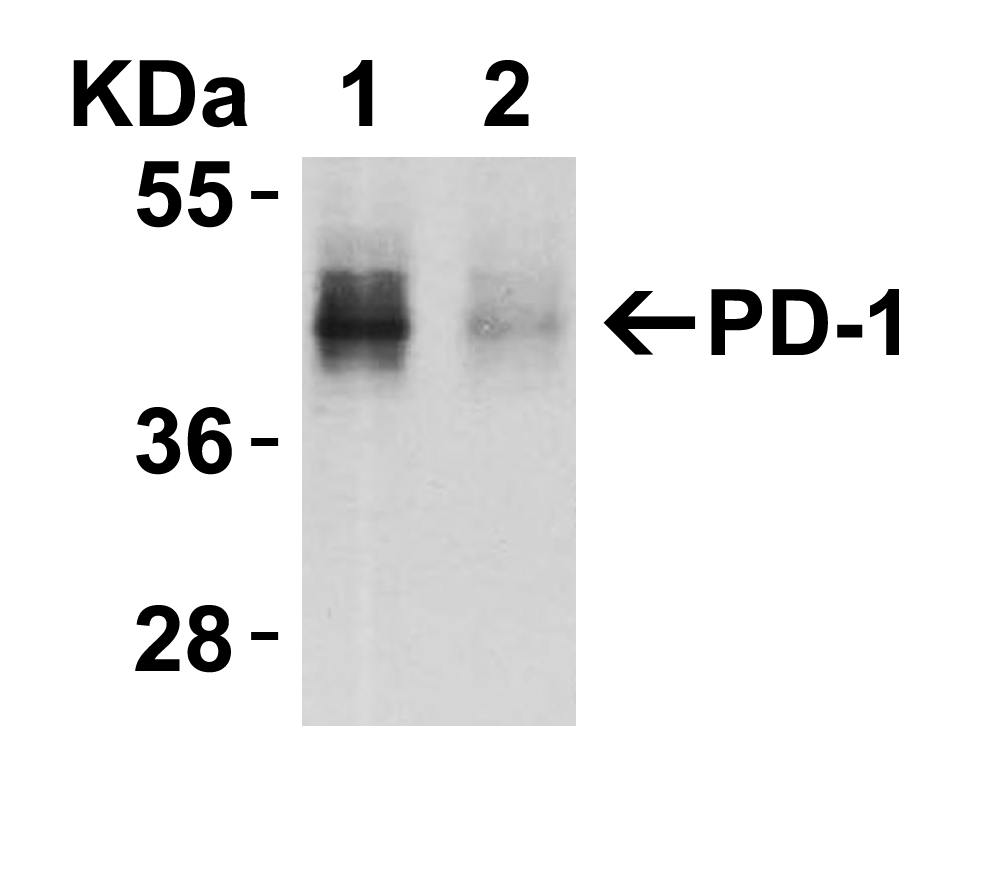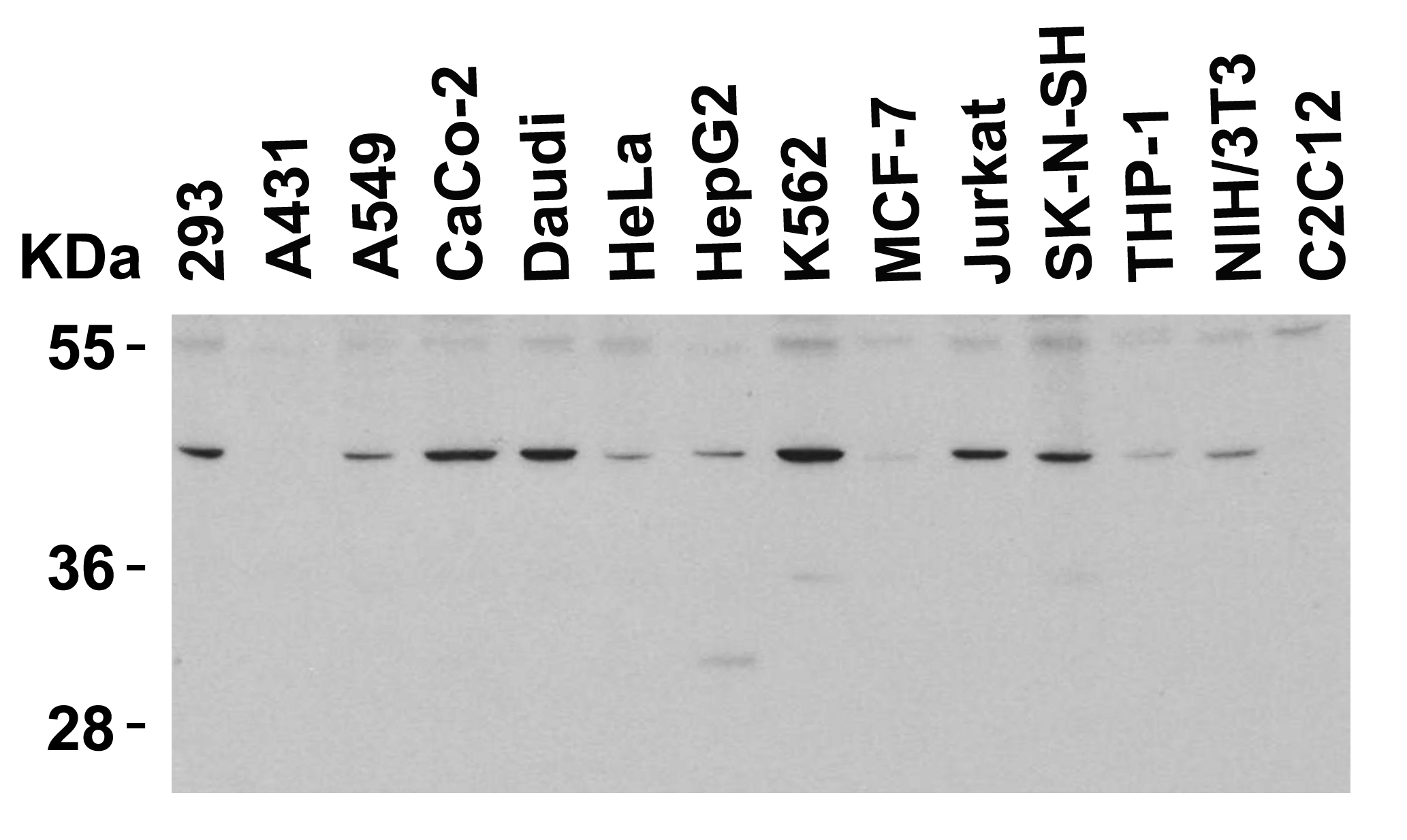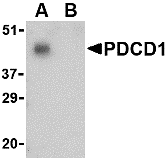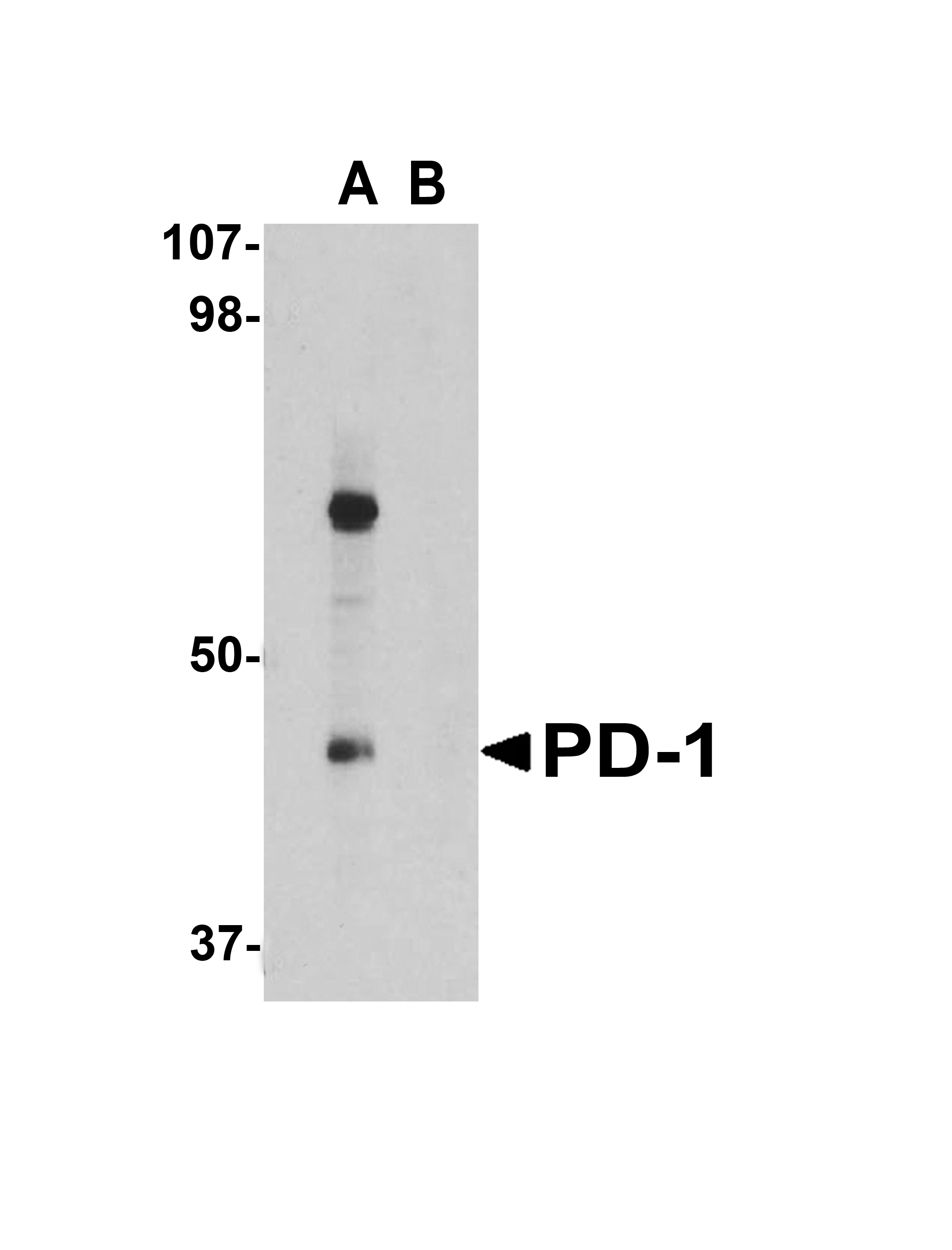PD-1 Antibody
| Code | Size | Price |
|---|
| PSI-4065-0.02mg | 0.02mg | £150.00 |
Quantity:
| PSI-4065-0.1mg | 0.1mg | £449.00 |
Quantity:
Prices exclude any Taxes / VAT
Overview
Host Type: Rabbit
Antibody Isotype: IgG
Antibody Clonality: Polyclonal
Regulatory Status: RUO
Target Species:
- Human
- Mouse
- Rat
Applications:
- Enzyme-Linked Immunosorbent Assay (ELISA)
- Immunofluorescence (IF)
- Immunohistochemistry (IHC)
- Western Blot (WB)
Images
Further Information
Additional Names:
PD-1 Antibody: PD1, PD-1, CD279, SLEB2, hPD-1, hPD-l, hSLE1, PD1, Programmed cell death protein 1, Protein PD-1, PDCD1, PDCD-1
Application Note:
WB: 1-4 μg/mL; IHC: 2.5-5 μg/mL; IF: 20 μg/mL.
Antibody validated: Western Blot in human, mouse and rat samples; Immunohistochemistry in human samples; Immunofluorescence in human samples. All other applications and species not yet tested.
Antibody validated: Western Blot in human, mouse and rat samples; Immunohistochemistry in human samples; Immunofluorescence in human samples. All other applications and species not yet tested.
Background:
PD-1 Antibody: Cell-mediated immune responses are initiated by T lymphocytes that are themselves stimulated by cognate peptides bound to MHC molecules on antig en-presenting cells (APC). T-cell activation is generally self-limited as activated T cells express receptors such as PD-1 (also known as PDCD-1) that mediate inhibitory signals from the APC. PD-1 can bind two different but related ligands, PDL-1 and PDL-2. Upon binding to either of these ligands, signals generated by PD-1 inhibit the activation of the immune response in the absence of "danger signals" such as LPS or other molecules associated with bacteria or other pathogens. Evidence for this is seen in PD1-null mice who exhibit hyperactivated immune systems and autoimmune diseases.
Background References:
- Holling et al. Hum. Immunol. 2004; 65:282-90.
- Ishida et al. EMBOJ. 1992;11:3887-95.
- Zhong et al. Int. Immunol. 2004; 16:1181-8
- Nishimura et al. Immunity 1999;11:141-51
Buffer:
PD-1 Antibody is supplied in PBS containing 0.02% sodium azide.
Concentration:
1 mg/mL
Conjugate:
Unconjugated
DISCLAIMER:
Optimal dilutions/concentrations should be determined by the end user. The information provided is a guideline for product use. This product is for research use only.
Immunogen:
Anti-PD-1 antibody (4065) was raised against a peptide corresponding to 16 amino acids near the carboxy terminus of human PD-1.
The immunogen is located within amino acids 210-260 of PD-1.
The immunogen is located within amino acids 210-260 of PD-1.
ISOFORMS:
Human PD-1 has 1 isoform (288aa, 32kD). Mouse PD-1 has 1 isoform 288aa, 32kD) and Rat PD-1 also has one isoform (287aa, 32kD). 4065 can detect human, mouse and rat.
NCBI Gene ID #:
5133
NCBI Official Name:
programmed cell death 1
NCBI Official Symbol:
PDCD1
NCBI Organism:
Homo sapiens
Physical State:
Liquid
PREDICTED MOLECULAR WEIGHT:
Human PD-1 has 1 isoform (288aa, 32kD). Mouse PD-1 has 1 isoform 288aa, 32kD) and Rat PD-1 also has one isoform (287aa, 32kD). 4065 can detect human, mouse and rat.
Protein Accession #:
Q15116
Protein GI Number:
145559515
Purification:
PD-1 Antibody is affinity chromatography purified via peptide column.
Research Area:
Apoptosis
Swissprot #:
Q15116
User NOte:
Optimal dilutions for each application to be determined by the researcher.
VALIDATION:
KO Validation (Figure 1): Anti-PD-1 antibodies (4065) specificity was further verified by PD-1 specific knockout. PD-1 signal was not detected in PD-1 knockout HeLa cells as compared to that in control wild type cells.
KD validation (Figure 2): Anti-PD-1 antibody (4065) specificity was further verified by PD-1 specific knockdown. PD-1 signal in HeLa cells transfected with PD-1 siRNAs or shRNA was disrupted in comparison with that in cells transfected with control siRNAs.
Related Products
| Product Name | Product Code | Supplier | PD-1 Peptide | PSI-4065P | ProSci | Summary Details | |||||||||||||||||||||||||||||||||||||||||||||||||||||||||||||||||||||||||||||||||||||||||||||
|---|---|---|---|---|---|---|---|---|---|---|---|---|---|---|---|---|---|---|---|---|---|---|---|---|---|---|---|---|---|---|---|---|---|---|---|---|---|---|---|---|---|---|---|---|---|---|---|---|---|---|---|---|---|---|---|---|---|---|---|---|---|---|---|---|---|---|---|---|---|---|---|---|---|---|---|---|---|---|---|---|---|---|---|---|---|---|---|---|---|---|---|---|---|---|---|---|---|---|---|










